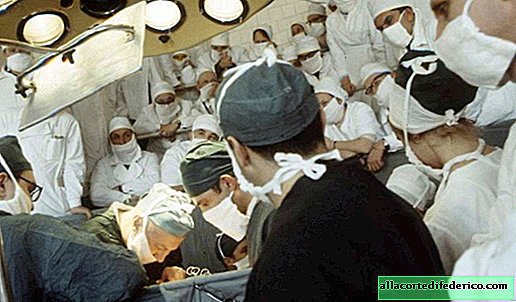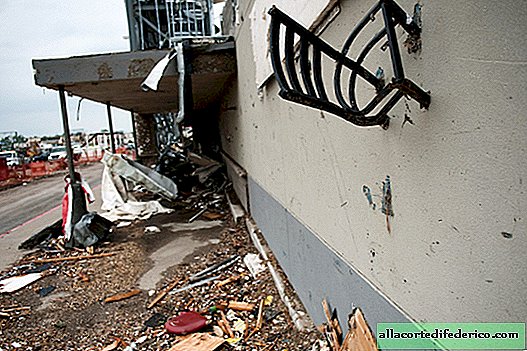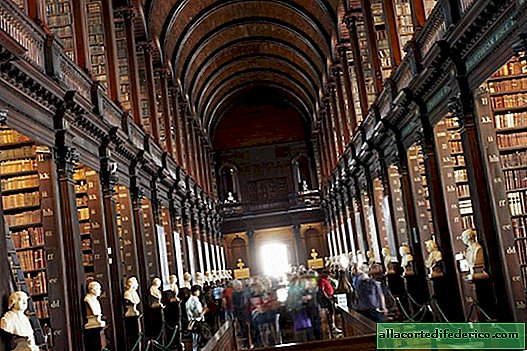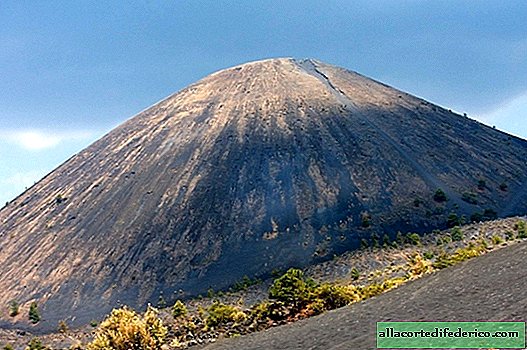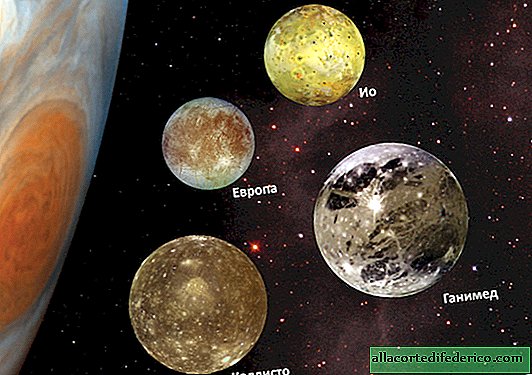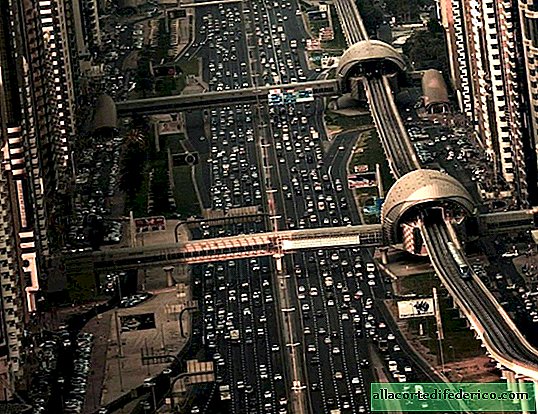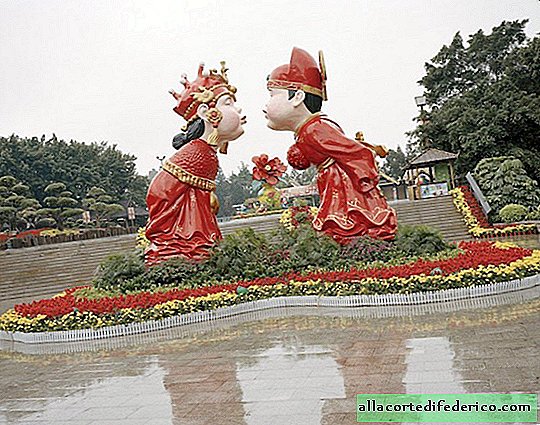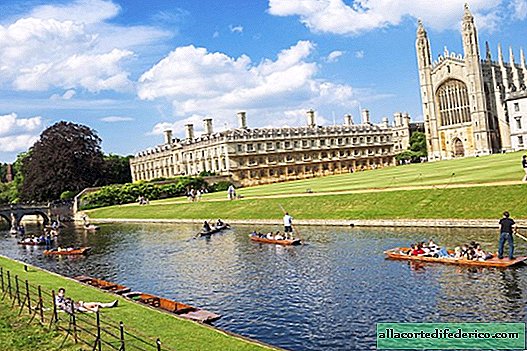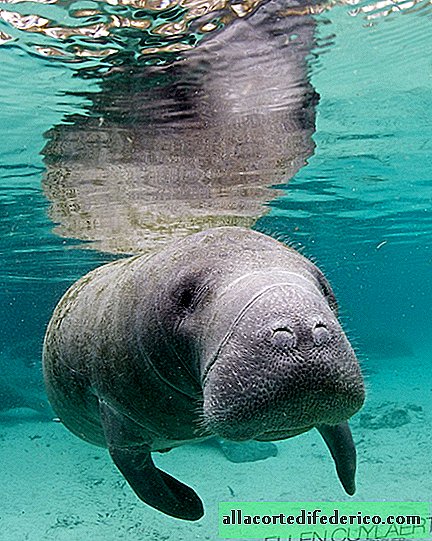Forbidden Kingdom Mustang
This forgotten or, conversely, God-preserved place is located high in the mountains, on the border between Nepal and Tibet. More recently, it was completely impossible to get there, only in 1991, the king of Nepal allowed ordinary tourists to visit this region. But even with permission, the traveler will have a difficult path full of hardships and hardships, at the end of which amazing discoveries await. At an altitude of 3700 meters above sea level, in a small valley is the capital city of Lo Mantang.
View of the city of Lo Mantang. On the left is a fragment of the royal "palace", although, when compared with the housing of the rest of the inhabitants, the king’s house is really a palace.

The first written records of Luo's territory are found in the Tibetan Chronicles of Ladakh, they date back to the seventh century. Then this territory was under the control of Tibetan governors, who had a residence in Tsarang. In the middle of the 15th century, the son of the governor Ame Pal, sensing that the power of the Tibetan state was weakened, took the opportunity and declared the territory of Lo an independent kingdom. It happened in 1440. The history of Luo's independent existence is described in the book of Mall, which has been kept in the monastery in Tsarang for many centuries.
Bird's eye view of Jomsom. Traditionally, it is from here that the trek to Mustang begins along the Kali Gandaka riverbed.

But the path, like a fate-villain, winds not only along the bottoms. Sometimes it takes off on passes of 4000 meters. Sometimes travelers have a hard time on such a trail. But, as they say, the road will be overpowered by the walking one.

Ame Pal is the king of the unifier, the king of the builder. External aggression bypassed Law for almost a century after its founding, and this was the heyday of religion and the prosperity of all classes. At that time, the climate was much milder, and the land of Mustang more fertile. Ame Pal annexed vast lands, built strategic points of fortresses and monasteries. If the monasteries are still standing and some of them are maintained in a tolerable form, then only ruins remained from the fortresses.
Indeed, if you look closely, on the way to the capital of the kingdom you can see many ruins. Among ordinary houses, chortens and monasteries of the pre-Buddhist Bon religion and thick walls of fortresses are guessed.

One of the famous Kzher dzong fortresses is located near Lo Mantang at the top of a narrow ridge dividing the northern Mustang into two valleys. All the fortresses in Mustang are rectangles in terms of. But Kecher looks different. According to legend, the father of Ame Pal, governor in Lo, instructed him to build fortifications and restore order in the northern lands. At that time, the warlike prince Demon "Black Monkey" ruled at the source of the Kali Gandak river. Ame Pal built the Kecher fortress, the Black Monkey demon was indignant - Kecher's sharp corner looked directly at the gates of his fortress and thereby guided evil spirits. Ame Pal rebuilt the walls of Kecher, making them round, and changing the place of his gates. But this did not help the Demon “Black Monkey”, after a few years he was defeated, and his fortress was destroyed.
Another legend tells how Ame Pal chose a place for the capital. He decided to move his residence from Tsarang. After praying the night, he set out with a herd of goats. He followed them until the goats stopped. The place was not far from the Kecher fortress. So Ame Pal chose a place for Lo Mantang, and since then the goat’s head has served as a symbol of the city. By the way, it was the name Lo Mantang that gave the modern name of the kingdom's territory - Mustang. So cartographers simplified the word Mantang. The view of the capital has not changed much since its construction by Ame Pal.
In the vicinity of the capital, at the bottom of the road (for ordinary tourists), there are several monasteries and small villages.

The next era of prosperity is associated with the names of the three saints, as they are called in Law: son of Ame Pal Angoon Zampo, his administrator or, as we would call, the minister, Kalun Zampo and Ngorchen Kunga Zampo, the famous lama who contributed to the spread and strengthening of Tibetan Buddhism in Lo . But at the end of the sixteenth century east of Law, the state of Jumla strengthened, a series of devastating wars began. Law fell under vassal dependence, the dynasty's power was preserved, but tribute was high. The heyday came to an end. Today, there are no traces left of the warlike Jumla, and the kingdom of Law has been preserved.
At the end of the eighteenth century, Jumla was conquered by Garkhali, the sovereigns of Nepal. And Lo just came under the control of the Nepalese royal family. The Nepalese retained Luo’s autonomy and royal power, calling the ruler Mustang Raja. The king in Law is the administrator, supreme judge, moral authority, and royal power is the axis of the structure of social life.
Four decades of Mustang's isolation (from 1951 to 1991) undermined trade - one of the activities of the lo-pa people - and seriously affected the standard of living, which is already not too high. But difficulties in no way affected the attitude of the lo-pap to life: their natural friendliness and respect for each other, the ability to live what is given to you today, and to welcome the onset of a new day have not gone away.
Altitude and November do their job. Weather - you can’t imagine worse. Now the sun is shining, then a squally wind blows with a whistle, and even with snow. No wonder so few people live in this inhospitable land.

Until now, some nomads lead the same way of life as their distant ancestors.

Work from infancy to old age. However, the appearance of the inhabitants of Luo is very deceptive. The fierce wind and the scorching sun quickly turn young people into old people and old women.

Lo mantang
The capital of Mustang was founded in the middle of the 15th century. And the look that now appears to travelers is not much different from the city built during the reign of Ame Pal (1387-1447), the first king of the independent state of Lo. The main feature of the city is the wall around, in which the masonry is interspersed with adobe blank walls of houses. You can enter the capital only through one gate, which closes after dark. The wall surrounding the city is not only a tribute to the warlike times of the founding of the Kingdom of Law, but protection from the local climate, from winds of destructive power.

By European standards, Lo Mantagn seems to be a tiny medieval city that miraculously survived. True, at the time of its foundation, it was a large urban settlement in comparison with other Tibetan cities. In architectural terms, Lo Mantang is a regular rectangle surrounded by a wall. A little over a hundred and twenty houses of the city adjoin each other with walls. The main building is the royal palace, the winter residence of the ruling king, close to the city gates and the main city square, which gives the impression of just a fairly large room. In the summer, Mustang kings prefer to live in a more modest palace outside the capital. There are four monasteries in Lo Mantagna, three of which were built during the time of Ame Pal. One of them, Champa Lakhang, is known as the “Castle of the Coming Buddha”, the golden statue of Maitreya, the Buddha of the Coming, standing in it was the largest in the whole Tibetan world.

Young monk at a meal. According to tradition, from each large family, one boy was given to the monastery. Now monasteries are like schools where they teach different subjects. People understand the importance and value of education.

The city is divided into four blocks, each has its own manager. By tradition, the houses of noble families are built on three floors, and the rest - only two. There are twelve houses of aristocrats, they are scattered around the city. The usual house of the capital's resident: two floors, made of unfired bricks, a flat inhabited roof. The floor is oiled; it is simply periodically swept and watered with water, creating dampness unbearable for a Westerner in winter. The first floor is winter, usually without windows to preserve valuable heat. The rooms of the second floor overlook the roof, where the main life is concentrated in the summer. The main room in the houses of lo-pa is a chapel. It is there that guests are accommodated.
The roofs of the houses of Lo Mantanga, as well as of any settlement in the country of Lo, are decorated around the perimeter with a strategic winter fuel supply - knobby rhizomes of the bush, which are collected in the mountains. But in the days of Ame Pal and until the nineteenth century, the appearance of the Mustang was not as deserted as it is now. The climatic changes in the Tibetan highlands, when, as the lo-pa says, "the water has left," turned the land, which is quite prosperous in natural terms, into a desert area, where water and wood are a great value. The stories about the forests of Mustang are not empty legends - palaces and monasteries are built using wood, the monasteries have carved wooden beams in two girths. But today it is impossible to imagine a lo-chopping tree.
If you visit Mustang in the summer, there may be few plots of land with greenery. But against the backdrop of mountains and scorched plateaus, these are miserable remnants of past luxury.


